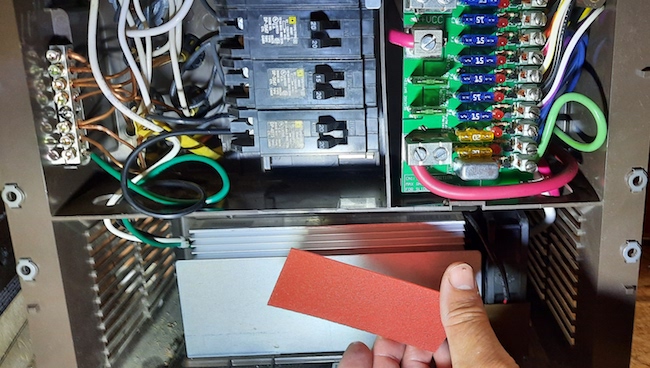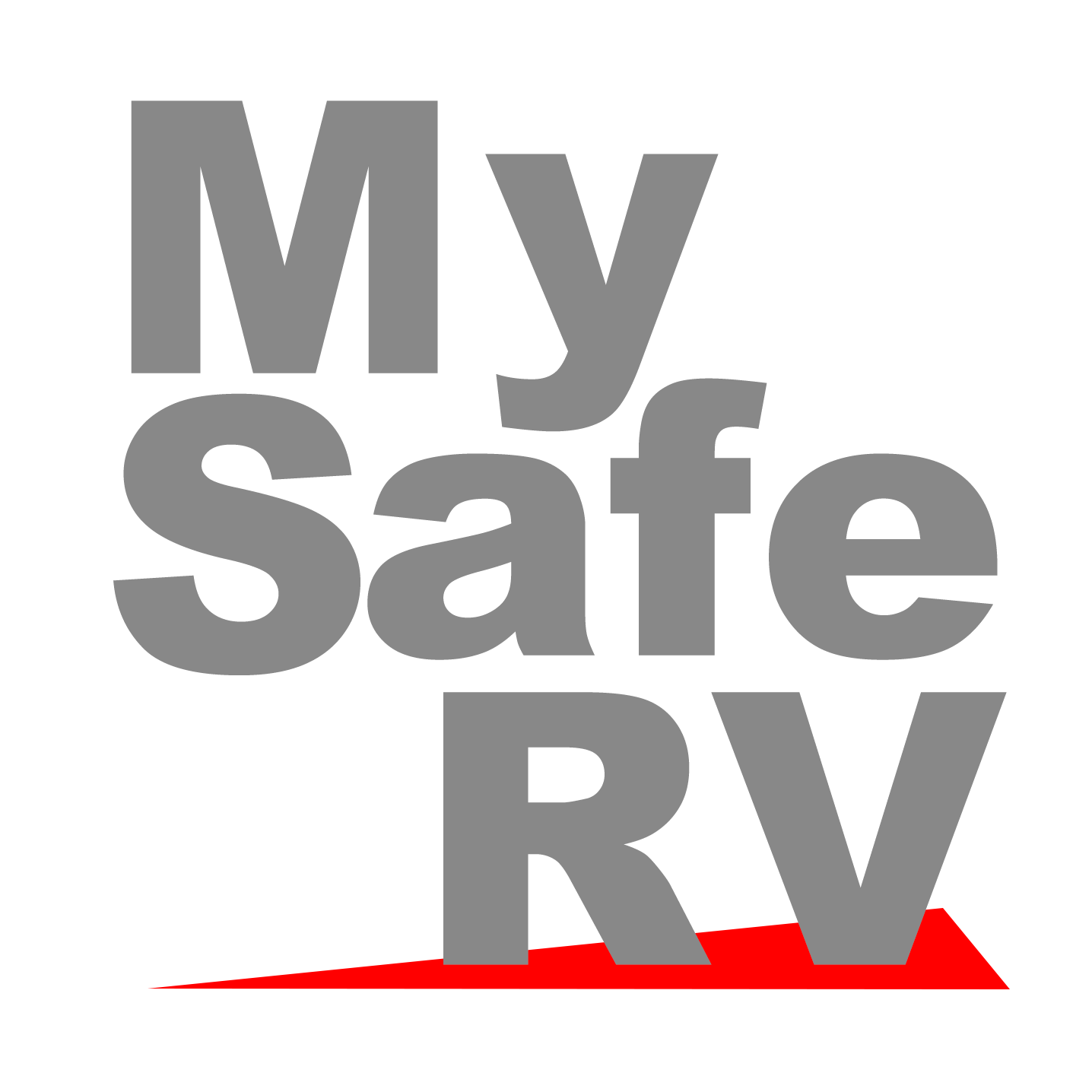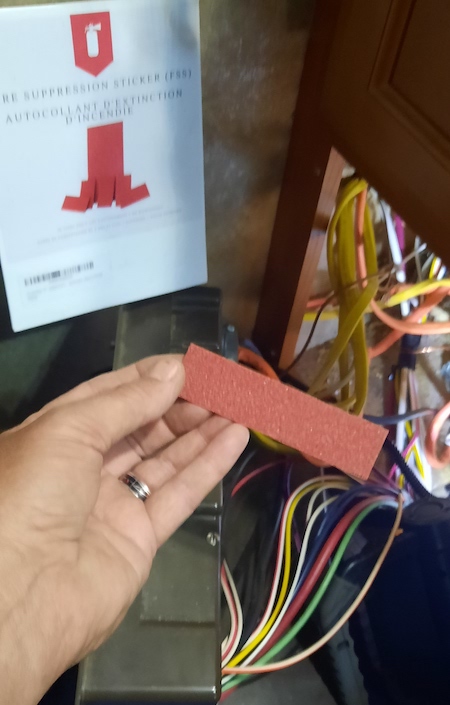An electrical fire can start at anytime in your RV and being prepared can save your life or the life of your loved ones. Automatic fire suppression is your first line of defence as a fully automatic fire extinguisher. While fires can start for a variety of reasons, electrical fires often go out of control because they start in hidden places, like behind walls or within panels in basements or other tucked-away locations.
Check out what’s available on Amazon now
MySafeRV.com has installed various fire suppression devices throughout our own fifthwheel. We cannot guarantee these automatic fire extinguishers will work in every situation and can only report on the information provided by manufacturers of these devices. We have not tested these items and only make recommendations based on the instructions provided by various manufacturers. The information in this page is for discussion and recommendations about how you may enhance your safety in some circumstances.
May stop the spread of electrical fires
Fire suppression devices come in many forms and are designed to be strategically placed within electrical distribution boxes, and other locations where fire may start. A good location is behind electrical appliances, like at the back of a microwave oven which could possibly cause a fire. Any enclosed spaces where there is a fire risk. Fire suppression systems may offer peace of mind knowing that if a fire does break out the fire suppression system may extinguish the fire before it spreads to other areas.
How a fire suppression system works
Fire suppression systems vary in the way they work, some have micro-capsules full of fire suppressants in them, and when they detect heat above 212°F (100°C), they release the suppression to put out the fire. A chemical reaction takes place within the chemicals which in some cases release harmless inert gasses which quickly envelops the fire and extinguishes it within an enclosed space.
– Easy to install
– Automatic
– Maintenance free
– Some systems may be effective against most household fires (A, B, and C)
Photo below: A ‘Firesticka’ adhesive type fire suppression in an RV electrical cabinet. This fire suppression system was designed to extinguish a fire in small cabinets. We have not been able to locate the manufacturer of this device in recent months.

How much protection do you need?
Suppliers and manufacturers of automatic fire suppression systems for RVs like ‘Fireslayer’ suggest matching the size of the fire suppression system to the area you need to protect. Various sizes will offer different levels of protection. There are some sizes available that may extinguish a fire in an RV engine bay. This is a large area with a lot of ventilation and the size of this fire extinguishing device will be much greater than the type recommended for an RV fuse box.
See the ‘Fireslayer’ here on Amazon. Available for purchase right now. The Fireslayer is designed for enclosed locations where a small fire may start due to ignition from propane, electrical short, or gasoline. The concept proposes to release a fire extinguishing chemical to put the fire out. In ideal circumstances, this system has been designed to extinguish some fires in isolated compartments like behind RV fridges and inside engine bays. The tubing enclosing the pressurized extinguishing agent melts from the heat and releases the extinguishing material which may extinguish the fire.
What other fire suppressions systems are available for RVs?
Automatic fire suppression systems vary in complexity and capability. There are systems that have storage tanks similar to a large portable fire extinguisher. These are often plumbed in with pressure lines throughout an engine bay of an RV. Fire detectors can be fitted to automatically trigger the built-in extinguisher. An alarm system may be installed to send warnings of a possible fire.
In a class A motorhome with the engine bay located at the very back of the RV, these types of systems may be useful where a fire breaks out around the engine. The driver and passengers may not be aware of the fire starting out 30 feet or more behind them, and without the automatic system and alarm, it might be minutes before they notice smoke or flames in the rear view mirrors.
Where would you put fire suppression systems in an RV?
Absorption fridges in RVs that work off propane have been known to cause a fire. The propane flame may ignite some leaves or a nest from a mouse. Sometimes the hydrogen component in the absorption fridge’s system can leak and in the unfortunately ideal moment, the flame from the propane burner causes a fire too. A correctly sized and installed fire suppression system may be able to extinguish this type of fire.
RVs have complex wiring and this wiring is usually part of two or even three different circuits. One is the 12 volt DC system for ceiling lights and other systems to allow you to camp off-grid. The second system is 120 volt AC which lets you run your appliances like a microwave or coffee maker. This system operates when you plug in to the 120 volt AC on campground pedestal or at home connected to an outlet. A generator onboard may also supply to this same electrical circuit. The third electrical system would be in a motorhome, class A or class B, which starts the engine and runs the headlights and indicator lights. Moving down the road causes electrical wiring to wear in poorly installed locations. It would be ideal to have various fire suppression devices located in areas where there are control boxes, like the automatic transfer switch, the fuse panel, and even where batteries are stored.
You may not be able to protect every possible fire event in every part of your RV, but if you install one or two of these devices in the most probable areas where a fire may start, then you may be protecting your entire RV and the safety of its occupants.

